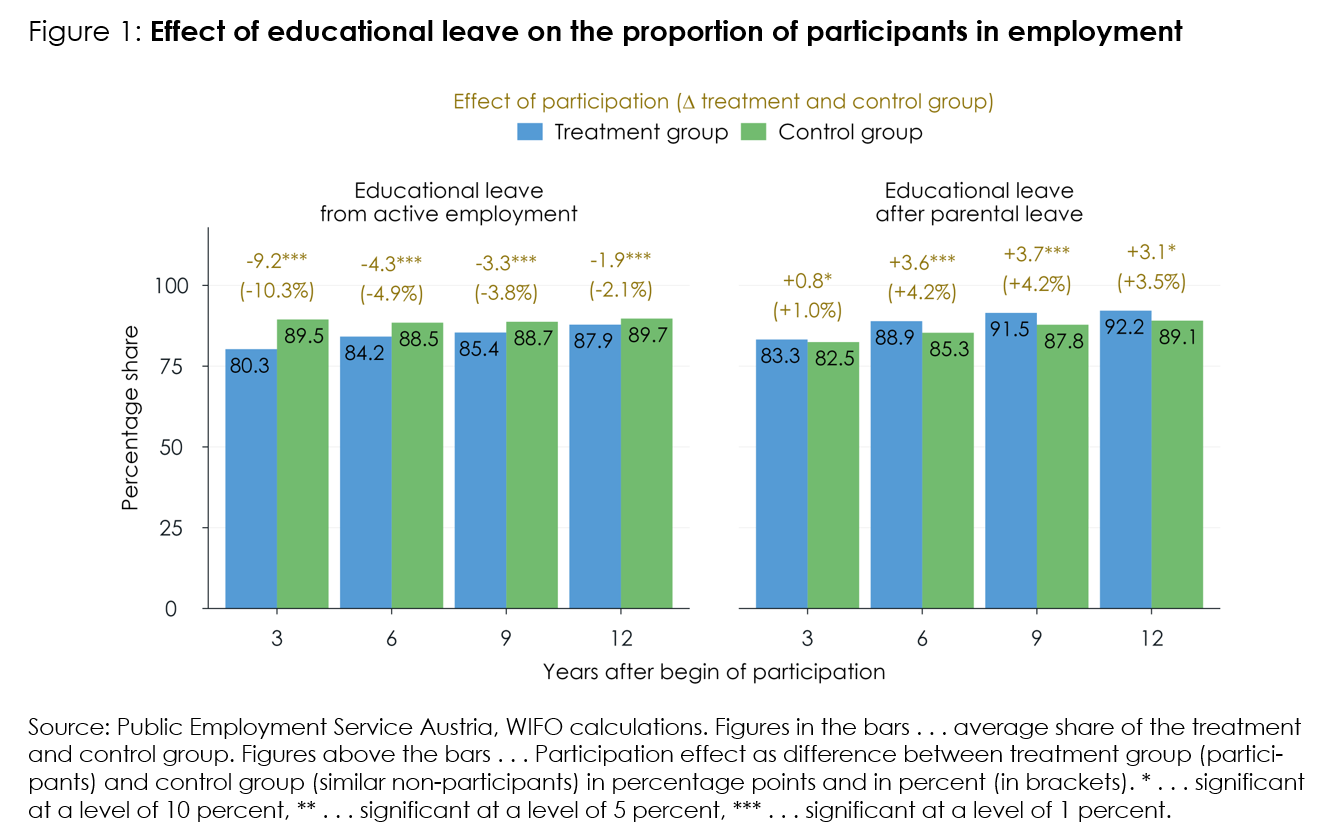
Targeted Measures Needed for Groups with Lower Educational Attainment
The study shows that participants tend to be young, female and better educated. About half have at least a high school diploma, compared to 40 percent of employed people of working age. It is striking that it is mainly people who are already well integrated in the labour market who take part.
Among the core group of people taking educational leave from active employment, there has been no significant change in take-up. Although there are more new entrants, the number of employees, i.e., potential participants, has also increased significantly. However, the use of educational leave following parental leave has increased significantly in recent years.
The effect of educational leave is moderate. A slightly negative employment effect was found for participants from active employment, while a moderately positive effect was found for women from parental leave. The study analysed entries from 2010 to 2019 and the effect up to 12 years after the start of participation. In concrete figures:
-
Participation from active employment reduced the proportion of participants in employment by 1.9 percentage points (from 89.7 to 87.9 percent) twelve years after the start of participation.
-
Participation after parental leave increased the employment rate of participating women by +3.1 percentage points (from 89.1 to 92.2 percent) after twelve years.
For both groups, educational leave led to higher monthly wages. Those in active employment experienced a decrease in their cumulative annual earnings due to the reduction in employment. On the other hand, women benefited from higher cumulative earnings after parental leave, as they were increasingly employed and benefited from higher monthly wages. In concrete figures:
-
For those actively employed, participation increased monthly earnings by an average of 203 € (+6.3 percent) in the 11th year after the start of participation and reduced cumulative annual earnings by 826 € (–2.6 percent).
-
For women on educational leave after parental leave, participation increased their monthly income by an average of 182 € (+7.7 percent) and their cumulative annual income by 2,381 € (+10.7 percent) in year 11.
A comprehensive survey of participants revealed a consistently positive view of educational leave as an opportunity for skills acquisition, personal development, compatibility with caring responsibilities and health stabilisation. 84 percent of respondents stated that educational leave was relevant for their career development.
WIFO emphasises the increasing importance of further training to keep pace with changes in the world of work and sees educational leave as an important instrument to promote this. However, the study clearly shows that there is room for improvement.
To increase labour market opportunities and participation more effectively, WIFO suggests linking educational leave more closely with appropriate further training measures, offering comprehensive, proactive educational counselling and taking targeted measures to reach less well integrated, less educated, and older people. These groups need to be targeted with specific continuing education programmes and adequate income security during continuing education.
Strengthening the educational component through comprehensive educational counselling, closer links to appropriate education programmes and certification of educational offers would help to ensure that educational leave is used more frequently in line with its intended purpose: to increase labour market opportunities through further education. This applies in particular to take-up after parental leave.
The study also shows a need for sufficient childcare infrastructure and special educational programmes for parents with young children who want to return to work. For a better focus on educational goals and to improve the evaluation of educational leave, WIFO suggests recording the educational level all participants as well as the further educational programme they have completed.


